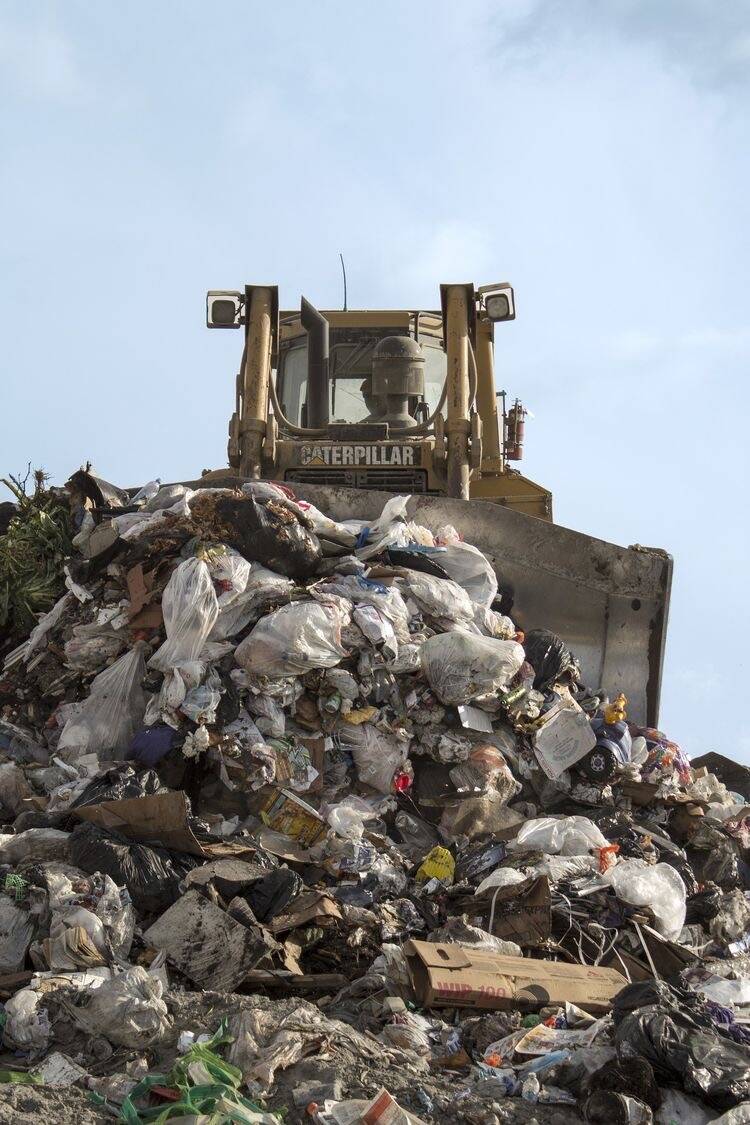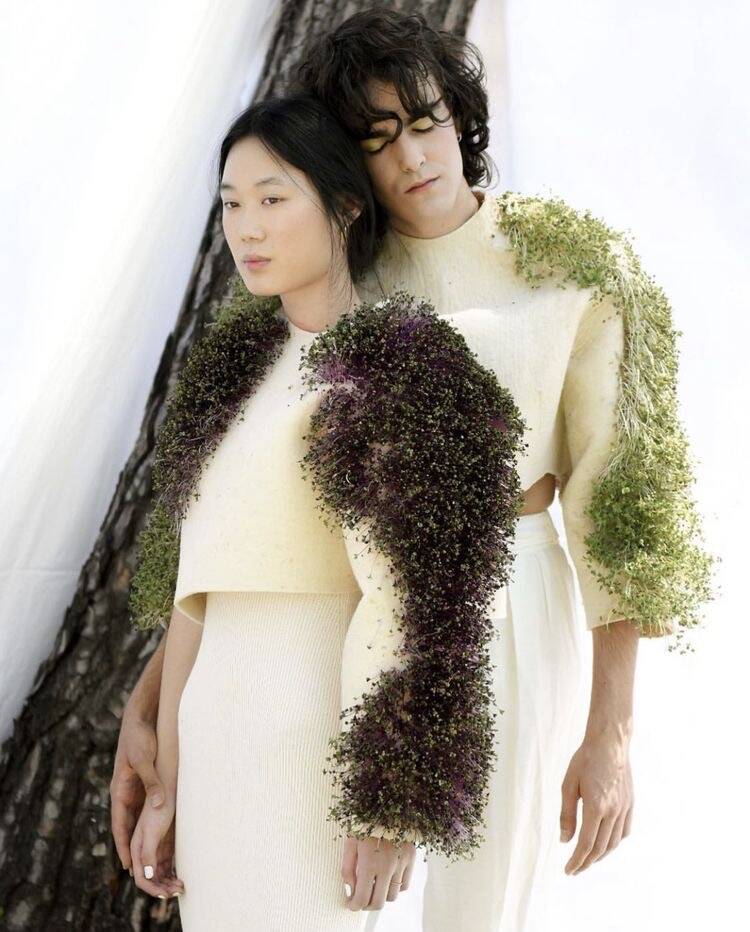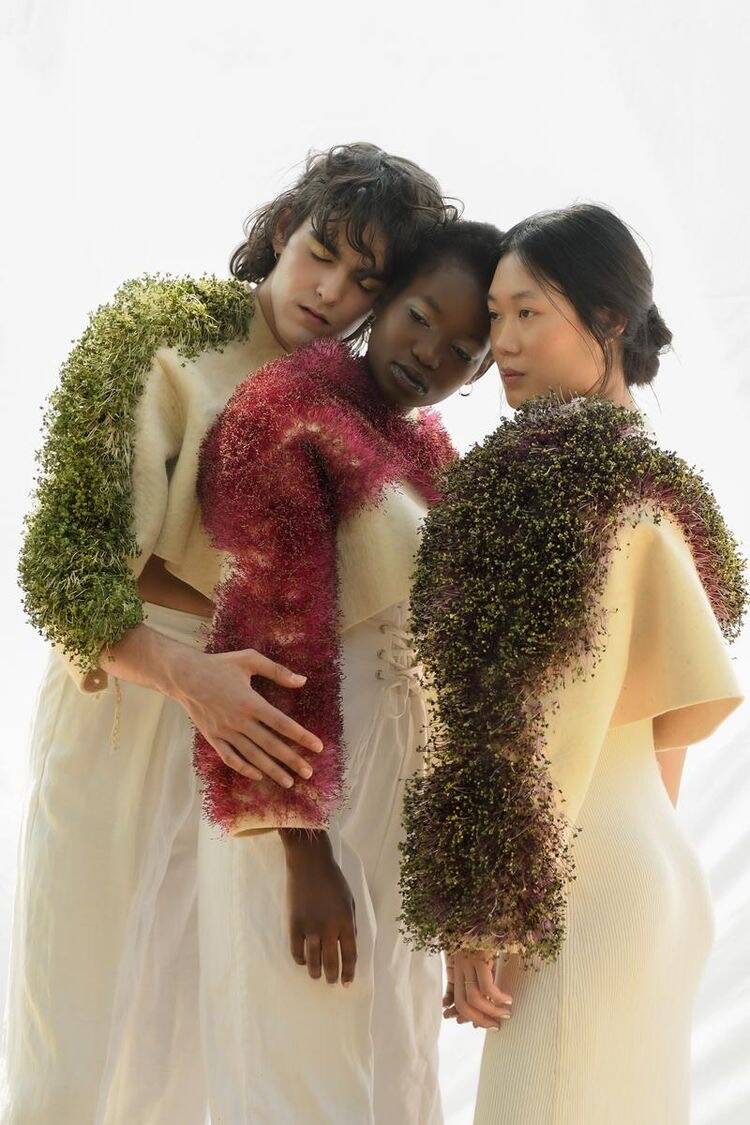
In the 21st century, climate change and environmental pollution are major global concerns. As the economy grows and people's living standards improve, lifestyles change, people overuse resources and the environment is damaged. The new coronavirus that will sweep the world in 2020 is a wake-up call to rethink ourselves and the link between humans and nature.
In this day and age, fashion production has become one of the most polluting industries in the world, as it increases the number of pollutants that pollute our environment. In a highly wasteful state of production, environmental pollution and ecological imbalance are still the norm in fashion development, and fashion is constantly drawing nutrients from nature in an irreversible way.
Fig1. “Personnes"(2010)by Christian Boltanski
I. Explanation of the concept of sustainable fashion
In Chinese, the term "fashion" is explained in specific terms, with the term "時" referring mainly to the current times, and "尚" meaning "reverence", "style" and "taste". Fashion means what is fashionable at the time; so fashion itself is a temporal adjective. Fashion is governed by superficial concepts: the matching of styles, the changing of primary colours, the transformation of fabrics, etc. However, fashion allows us to observe changes in the environmental, social, political, economic and cultural factors that permeate our lives on a personal, geographical and global level. The concept of 'sustainable fashion' is analysed and understood to be a derivative of sustainable development.
According to the information available, sustainable development was first introduced in the 1980s and has been defined as the ability to meet the specific needs of people today without threatening the development of future generations." At the same time, it is also an important factor in national applications and policy-making. In the 1990s, the Chinese government drew up specific plans for the country's development, and at the same time made it clear that sustainable development was to be "concretely applied to the country's economic development" in response to the current trends. It explores how to develop with ecological sustainability as the basis for development.
Since the beginning of economic development, the focus has been on the economy, but nowadays, climate and environmental issues are becoming more and more serious and are a major concern for China and the developed countries in the West. As time goes by, more and more consumers are becoming aware of this problem within the industry and those involved in the fashion industry are beginning to look at themselves and take effective measures to address this issue. This is why the concept of sustainable fashion was born, defined by scientific organisations as the creation of science in a sustainable way, or the sale of objects in a green and sustainable way, with a focus on the economic impact of the environment.
In 2019, "sustainable" will be the most frequently used word in the fashion industry, and in 2020 "sustainable fashion" will be the dominant trend in the industry. The concept of sustainable clothing design is based on the current state of fashion design, taking into account market trends and analysing them from a sustainable perspective. The materials used include biodegradable organic cotton and other environmentally friendly materials. This material has a range of advantages and characteristics that, on the one hand, meet specific needs and offer people a diversity of options. On the other hand, it does not have a negative impact on today's social environment as well as on economic development, producing fashion garments with a longer cycle. The sustainable practices carried out by the fashion industry are not only an act of public interest to reduce waste and protect the environment, but also a business strategy to promote innovation in the industry, attract consumers and adapt to the trend of sustainable development.


Fig2.3 The Project of Every Curve (2016)at PAPILLION ART, Los Angeles, by Zoë Buckman
II. The current state of development of sustainable fashion
Since the 1980s, the influence of fashion on society and culture has grown, with the steady growth of mass production of ready-to-wear, the establishment of large modern textile factories, the development of the fashion retail industry, the fashion industry becoming more professional, the media and business through the celebrity effect to create fashion "fast fashion" consumption was born. Fast fashion products have also become a major part of the fashion industry in this day and age, and as time goes on, people are becoming more and more receptive to what is trendy, thus pushing fast fashion clothing onto the market and driving its development. According to reliable scientific data from a number of authorities, the global clothing industry produces over 100 billion pieces of clothing each year in this day and age. However, its production process inevitably generates a certain amount of pollution, and after statistical analysis, carbon emissions account for more than 10% of global emissions, if not more. It can be seen that the fast fashion industry dominates today's apparel industry, which is causing a large amount of environmental pollution. There is also an over-commercialisation in industrial design, which has come under fire from the design community and its counterparts. Some designers have taken into account the current state of affairs and have reconsidered their responsibilities.
The 1990s also saw a new wave of communication and a new code of practice for British designers. In the 1990s, a new round of communication and legislation was introduced, which stressed the need for designers to be aware of their responsibilities and to take effective measures to minimise pollution in their daily lives and work.
This includes not only environmental aspects but also biological and riverine aspects. In the process of analysis, it is understood that the main emphasis of the "green design" phase is on the use of materials that are less polluting to the environment, and that the 3R concept is used in the application process. The application of these three concepts on the one hand enhances social values and, in addition, fulfils well the sustainable development policy of protecting the environment, an aspect that is also highly respected. However, a deeper analysis shows that this concept is not really sustainable.
The "global free trade and fast fashion" model of operation has increased the efficiency of fashion production, and the consumerism of online shopping has accelerated the pace of fashion development. The fashion industry has become a huge contributor to the environmental crisis. At the same time, the fashion industry has become a group of educated people who are calling for
To face up to environmental issues and to take practical action to promote sustainable fashion, the future of fashion is full of hope and challenges. Every year, 1.9 billion tonnes of non-recyclable waste are produced and around 120 million trees are cut down each year to make cellulose plants, of which around a third are old or endangered trees and forests. Fashion itself represents change and the ability to constantly challenge the status quo and reflect on oneself. A comprehensive analysis shows that sustainable fashion also uses certain methods in the design of its fabrics, including recycling and the selection of the most suitable fabrics according to the concept of sustainability. At the structural level, a variety of methods are used, such as multifunctional design and modular design. At the emotional level there is also a certain approach to design, which starts with the concept of design and in the process is dedicated to understanding the psychology of the consumer, while strengthening the connection between the consumer and the brand, so that the consumer is integrated into the brand story and has a certain empathy. Under such conditions can better sensitise consumers and thus drive them to buy clothing. Some industry insiders believe that fashion is also a reflection of people's pursuit of life from another perspective, and that under such conditions it is also important to guide people to form the right ideology.
The sustainable fashion brand is represented by Stella MeCattney, who has completed the letter 'A' to 'Z' manifesto during the new coronavirus outbreak, with each manifesto accompanied by the Stella MeCartney logo. each of which was accompanied by a Stella MeCartney
In collaboration with Bolt Threads, a biotech company based in San Francisco, Stella McCartney has launched a leather based on mushroom mycelium to address the circular economy. Developed using the root fibres of mushrooms, mushroom leather is a material that achieves a similar feel to that of animal leather while being soft and breathable.
Prada has always used nylon as a classic feature, but since 2019 it has also introduced 'recycled nylon' to keep up with the trend for sustainable fashion.

Fig4.5.6 .A research project named Siamese Skins(2020). by Paula Ulargui


III. Can sustainability really be the norm in the new century?
Although sustainable fashion is one of the key focal points of the future, it is not fully established within the industry, either in terms of side business or customer base. Consumer interest in sustainable fashion is gradually increasing, but after all, sustainability itself is a very complex concept, so there is still a behavioural gap in consumer attitudes towards sustainable development.
So in summary for the customer base there is still a need for sales staff within the industry and communication from the community to get the customer base on the same page.
The trend towards sustainability is a positive one, but it is still a wait-and-see situation.
List Of Illustrations
Fig.1. “Personnes"(2010)by Christian Boltanski [Online]. Available at: https://pixabay.com/zh/photos/landfill-bulldozer-garbage-dump-2890579/
Fig.2.The Project of Every Curve (2016)at PAPILLION ART, Los Angeles, by Zoë Buckman .[Online]. Available at: https://www.zoebuckman.com/work/every-curve-art/
Fig.3.The Project of Every Curve (2016)at PAPILLION ART, Los Angeles, by Zoë Buckman .[Online]. Available at: https://www.zoebuckman.com/work/every-curve-art/
Fig.4.A research project named Siamese Skins(2020). by Paula Ulargui. [Online]. Available at: https://www.rawassembly.com/post/designer-feature-paula-ulargui
Fig.5.A research project named Siamese Skins(2020). by Paula Ulargui. [Online]. Available at: https://www.rawassembly.com/post/designer-feature-paula-ulargui
Fig.6.A research project named Siamese Skins(2020). by Paula Ulargui. [Online]. Available at: .https://www.rawassembly.com/post/designer-feature-paula-ulargui
Add comment
Comments